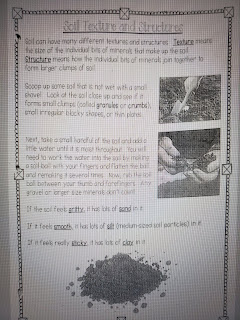Haaapppppyyyy Mondaaaayyy!!!!!!
Below is a picture of our daily schedule, along with some details on what we will be doing in each subject.
All of the information below has been posted on Seesaw under the subject's task for the day. All French, Gym and Music tasks will all be created and posted on Seesaw by the teachers who teach your child that subject.
Language
All spelling activities, every week, must be completed on paper and in cursive!
Your spelling activities are due at the end of the week, which means you have ALL week to complete your spelling activities, just like you do when we are at school. They can then be uploaded on Seesaw by:
- Clicking the green “Add Response” on the Spelling Language task
- Take pictures of worksheets
- Click the green check mark to submit.
Level B Learning Goals: We will be able to identify the rules for when we add -ed, -es or -s to the end of a root word. We will create SUPER sentences using our spelling words.
Level C Learning Goals: We will be able to identify the sounds of vowel pairs and vowel digraphs in our list words. We will create SUPER sentences using our spelling words.
- Complete your spelling workbook pages
- Complete your spelling SUPER sentences in cursive on a sheet of paper.
Success Criteria:
- I wrote my sentences in cursive and skipped lines between each sentence.
- I understand the meaning of each list word and used them in a SUPER sentence with 8 or more words.
- I began each sentence with a capital letter and ended each sentence with a punctuation mark.
- I underlined my list word in each sentence and made sure it’s spelled correctly.
Unit of Inquiry
In today’s lesson we will learn about 4 different types of soil and their characteristics. While reading the worksheet, highlight any important information to help you explain the difference between sandy, silty, clay and loamy soil. Once you finish reading and highlighting, watch the video attached to see the difference between sandy, clay and loamy soil. After you’ve finished all the above, record your voice explaining which type of soil is best for plants and why.
The last part of todays task involves a separating soil experiment. You should have already completed Part 1 before you move onto this experiment. If you do not have a glass jar to complete this today, try to complete it tomorrow or another day of the week when you do have the class jar with a lid. Time to use some FRACTIONS when filling the jar! Follow the procedure very carefully when completing this experiment.
Make sure you draw a what you see BEFORE SHAKING THE JAR, 5 minutes later, and you will have to come back to record the last jar tomorrow. This worksheet must be completed ON PAPER, using pencil crayons/markers to show me what it looks like.
** Remember the importance of washing your hands after playing with soil, even if you used gardening gloves. **
- Complete reading & highlight important information
- Watch video https://www.youtube.com/watch?v=uS7zfeK4OTQ
- Record voice explaining which type of soil is best for plants and why
- Separating Soil Experiment
Learning Goal: We will be able to identify and describe the different types of soil and their characteristics.
Success Criteria:
- I can name and describe the 4 different types of soil.
- I can explain which soil is best to grow plants.
- I follow safety procedures when playing with soil (ie. Washing hands).
Math
In today’s math activity you have to identify the probability of a variety of events from the spinner. I know there is not much space on the line to fit the WHOLE probability statement (P(favourable outcome) = ____), so I am asking you to write the answer to the question underneath each question. The first two are done for you as an example. It is helpful if highlight any important information like I did in the first two examples.
In today’s math activity you have to identify the probability of a variety of events from the spinner. I know there is not much space on the line to fit the WHOLE probability statement (P(favourable outcome) = ____), so I am asking you to write the answer to the question underneath each question. The first two are done for you as an example. It is helpful if highlight any important information like I did in the first two examples.
Learning Goal: We will be able to identify the probability of a variety of events on a spinner.
Success Criteria:
- I could identify the favourable outcome in each question.
- I used the probability statement to express the probability of an event in fraction form.















































